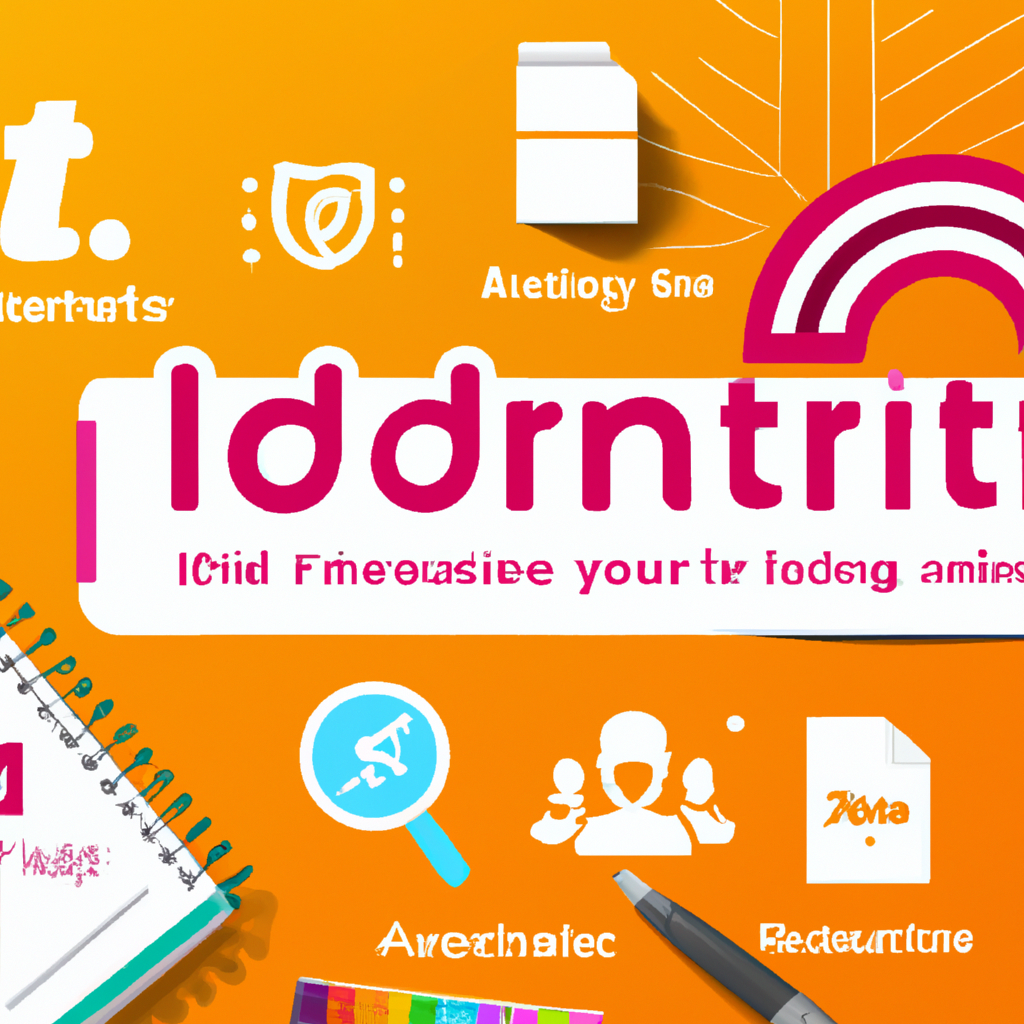So, you’re starting an online business and you want to establish a strong brand identity. Building a brand identity is crucial for standing out in the digital landscape and attracting your target audience. But how do you go about it? In this article, we’ll explore some effective strategies to help you build a compelling brand identity that not only showcases your unique offerings but also connects with your customers on a deeper level. From defining your brand values to creating a visually appealing brand image, we’ve got you covered. Let’s get started on your journey to creating a strong brand identity for your online business!

1. Define Your Brand
Building a strong brand identity is crucial for the success of your online business. It’s how you differentiate yourself from competitors and establish a memorable presence in the minds of your target audience. To begin, you need to define your brand by determining your target audience, developing your brand values, and crafting your brand mission statement.
1.1 Determine Your Target Audience
Understanding your target audience is essential in creating a brand that resonates with them. Start by researching and analyzing who your ideal customers are. Consider factors such as demographics, psychographics, and behaviors. By knowing your target audience, you can tailor your brand messaging, voice, and visuals to effectively communicate with them.
1.2 Develop Your Brand Values
Your brand values are the core beliefs and principles that guide your business’s actions. Determine what values are important to your brand and align them with your target audience’s values. This will help create a genuine connection and build trust. Whether it’s sustainability, innovation, or exceptional customer service, identifying your brand values will set the foundation for your brand identity.
1.3 Craft Your Brand Mission Statement
Your brand mission statement encapsulates the purpose and goals of your online business. It should be concise, inspiring, and reflective of your brand’s values. Clearly define what your brand aims to achieve and how it aims to impact its target audience. A well-crafted mission statement will serve as a guiding light for your brand and resonate with your customers.
2. Conduct Market Research
Market research is crucial in understanding your competitive landscape, target market, and customer needs. By conducting thorough research, you can make informed decisions and develop strategies that align with your brand identity.
2.1 Identify Your Competitors
Identify and analyze your direct and indirect competitors. Study their brand positioning, marketing strategies, and unique selling propositions. This will help you differentiate your brand and identify opportunities to stand out in the market. Understand what your competitors are doing well and where they may be falling short.
2.2 Analyze Your Target Market
Gaining a deep understanding of your target market is essential for tailoring your brand to their needs. Conduct surveys, interviews, and analyze market data to identify trends and preferences. Consider aspects such as demographics, interests, pain points, and purchasing behavior. This information will help you create targeted marketing campaigns and resonate with your audience.
2.3 Understand Your Customers’ Needs
Identifying and understanding your customers’ needs is crucial for building a brand that meets their expectations. Conduct qualitative and quantitative research to gain insights into their preferences, challenges, and aspirations. Use these findings to shape your brand messaging, product development, and customer experience. By addressing your customers’ needs, you can build strong brand loyalty and advocacy.
3. Create a Unique Brand Name
Your brand name is the first impression customers will have of your online business. It should be memorable, relevant, and unique. To create a compelling brand name, follow these steps:
3.1 Brainstorming and Idea Generation
Gather your team and start brainstorming potential brand names. Consider words, concepts, and associations that relate to your business, target audience, and brand values. Explore different variations and combinations until you find a name that captures the essence of your brand.
3.2 Checking Trademark Availability
Once you have a list of potential brand names, conduct a thorough search to ensure they are not already trademarked or being used by another business. This will help you avoid legal complications and brand confusion down the line. A simple search on trademark databases or consulting with a trademark attorney can assist you in this process.
3.3 Selecting a Memorable and Relevant Name
Choose a brand name that is not only memorable but also reflects your brand’s identity and resonates with your target audience. Consider the emotions and associations it evokes. Test the name with focus groups or potential customers to gather feedback and ensure it aligns with your brand vision.
4. Design Your Brand Logo
Your brand logo is a visual representation of your business and plays a crucial role in brand recognition. To design a logo that effectively communicates your brand identity, follow these steps:
4.1 Hire a Professional Designer
Invest in the expertise of a professional designer who can understand your brand and create a logo that aligns with your values and target audience. They will have the technical skills and creative vision to design a visually appealing logo that stands the test of time.
4.2 Incorporate Your Brand Values
Your logo should visually represent your brand values. It should evoke the emotions, qualities, and associations you want to be linked with your brand. Consider the use of color, shape, and typography to convey your brand’s essence.
4.3 Make it Scalable and Versatile
Ensure your logo can be easily resized without losing its integrity or legibility. It should maintain its clarity and impact across different mediums and sizes, from small social media icons to large billboard advertisements. A versatile logo allows for consistent branding across various touchpoints.

5. Choose Your Brand Colors and Typography
Color and typography play a significant role in evoking emotions and creating a cohesive brand identity. Consider the following steps when choosing your brand colors and typography:
5.1 Select a Color Palette
Choose a color palette that aligns with your brand values, target audience, and industry. Different colors evoke different emotions, so consider the psychological associations of each color. Aim for a balanced palette that reflects your brand’s personality.
5.2 Consider Psychological Associations
Understanding the psychological associations of colors is crucial for conveying the right message through your brand. For example, blue may evoke feelings of trust and reliability, while yellow can symbolize optimism and creativity. Choose colors that resonate with your brand’s values and target audience.
5.3 Choose Suitable Typography
Typography sets the tone for your brand’s written communication. Consider the legibility, personality, and scalability of your chosen fonts. Aim for a combination of fonts that complement each other while reflecting your brand’s identity. Use different weights and styles to create variation.
6. Develop Your Brand Voice
Your brand voice is how you communicate with your audience. It reflects your brand’s personality, values, and unique selling proposition. Follow these steps to develop a consistent and authentic brand voice:
6.1 Determine Your Brand Personality
Define the personality traits that best represent your brand. Are you playful and casual, or professional and authoritative? Align your brand voice with your target audience and brand values to create a cohesive and relatable persona.
6.2 Establish Consistent Tone of Voice
Consistency is key in building a strong brand identity. Ensure that your brand voice remains consistent across all channels and touchpoints. Whether it’s social media posts or customer support interactions, your brand’s tone should feel familiar and unique to your audience.
6.3 Create Brand Guidelines for Communication
Develop a set of brand guidelines that outline your brand’s voice, tone, and style. These guidelines will serve as a reference for anyone involved in creating content or communicating on behalf of your brand. It ensures a consistent and coherent brand experience for your audience.
7. Build a Consistent Online Presence
Creating a consistent online presence is essential for establishing your brand’s identity and increasing brand awareness. Follow these steps to build a strong online presence:
7.1 Create a Professional Website
Your website is your online storefront. Invest in a well-designed website that aligns with your brand identity and provides a seamless user experience. Ensure that it is mobile-friendly, easy to navigate, and reflects your brand’s values and aesthetics.
7.2 Optimize Your Social Media Profiles
Maintain consistent branding across all your social media profiles. Use your logo, color palette, and typography to reinforce your brand identity. Tailor your messaging and content to each platform, while staying true to your brand voice and values.
7.3 Blogging or Content Creation
Regularly create and publish high-quality content that is valuable to your target audience. Whether it’s blog articles, videos, or podcasts, focus on providing informative and engaging content that aligns with your brand values. Consistent content creation helps position your brand as an industry expert and builds trust with your audience.
8. Deliver High-Quality Content
High-quality content is essential for building brand credibility, attracting and retaining customers. Follow these steps to deliver content that resonates with your audience:
8.1 Establish Content Themes and Topics
Define content themes and topics that align with your brand and interests your target audience. Consider what problems your audience faces and how your content can provide solutions or valuable insights. This will help you create a content strategy that consistently delivers value.
8.2 Create Engaging and Relevant Content
Ensure your content is well-researched, informative, and engaging. Use storytelling techniques, visuals, and examples to make your content more relatable and shareable. Tailor your content to different stages of the customer journey, providing valuable information at each step.
8.3 Be Consistent in Publishing
Consistency is key in content marketing. Develop an editorial calendar and stick to it. Regularly publish content on your website or blog, and promote it across your social media channels. This builds anticipation among your audience and keeps them engaged with your brand.
9. Engage with Your Target Audience
Engaging with your target audience is crucial for building brand loyalty and fostering strong relationships. Follow these steps to effectively engage with your audience:
9.1 Social Media Engagement
Actively engage with your audience on social media platforms. Respond to comments, reviews, and messages promptly and in a friendly manner. Encourage conversations and user-generated content by asking questions or running contests. Show appreciation for your followers and foster a sense of community.
9.2 Respond to Customer Feedback
Listen to your customers and value their feedback. Respond to both positive and negative feedback in a timely and constructive manner. This shows that you genuinely care about their opinions and are committed to improving their experience with your brand.
9.3 Establish and Nurture Relationships
Build relationships with your audience by providing personalized experiences and offering exclusive perks or promotions. Create loyalty programs, offer rewards, and host events or webinars to connect with your customers on a deeper level. By fostering relationships, you can turn customers into brand advocates.
10. Monitor, Measure, and Adapt
Building a brand identity is an ongoing process. To ensure its success, you need to regularly monitor your brand’s performance, analyze key performance indicators (KPIs), and adapt your strategies accordingly:
10.1 Regularly Monitor Your Brand’s Performance
Stay updated on how your brand is performing in the market. Monitor metrics such as website traffic, social media engagement, and customer feedback. Use analytics tools to gather data and insights that inform your decision-making process.
10.2 Analyze Key Performance Indicators
Identify the key performance indicators that are relevant to your brand goals. Whether it’s conversion rates, customer satisfaction scores, or brand mentions, analyze the data to assess your brand’s performance. Identify areas of improvement and capitalize on successful strategies.
10.3 Adjust and Refine Your Brand Strategy
Use the insights gained from monitoring and analyzing your brand’s performance to refine your brand strategy. Adapt your messaging, marketing channels, or product offerings based on market trends and customer feedback. Stay agile and responsive to changes in the market to ensure your brand remains relevant.
In conclusion, building a brand identity for your online business requires careful consideration and attention to detail. By defining your brand, conducting thorough market research, creating a distinct brand name and logo, choosing appropriate colors and typography, developing a consistent brand voice, building a consistent online presence, delivering high-quality content, engaging with your target audience, and monitoring and adapting your strategies, you can build a strong and memorable brand that resonates with your audience and sets your business apart from the competition.




